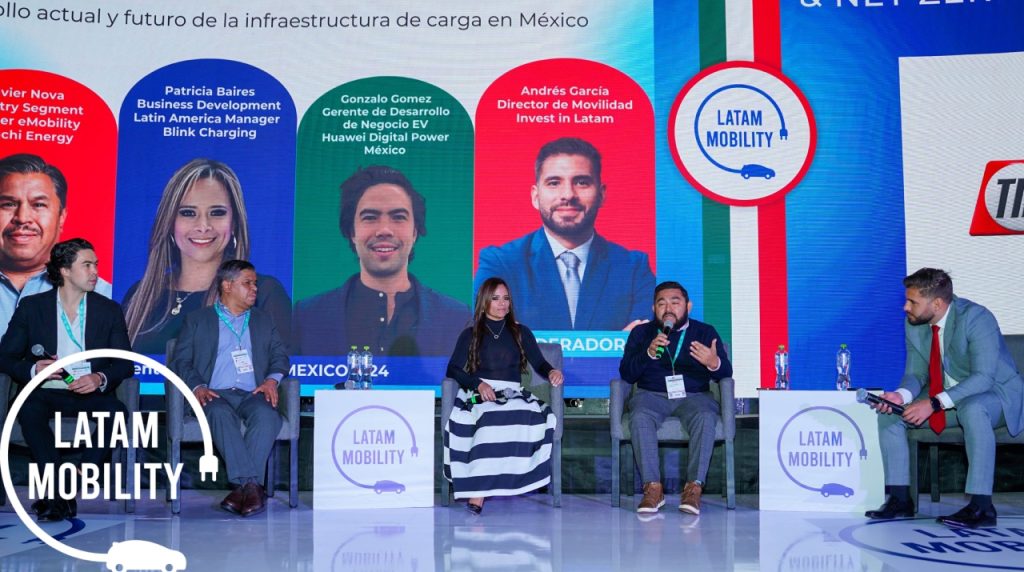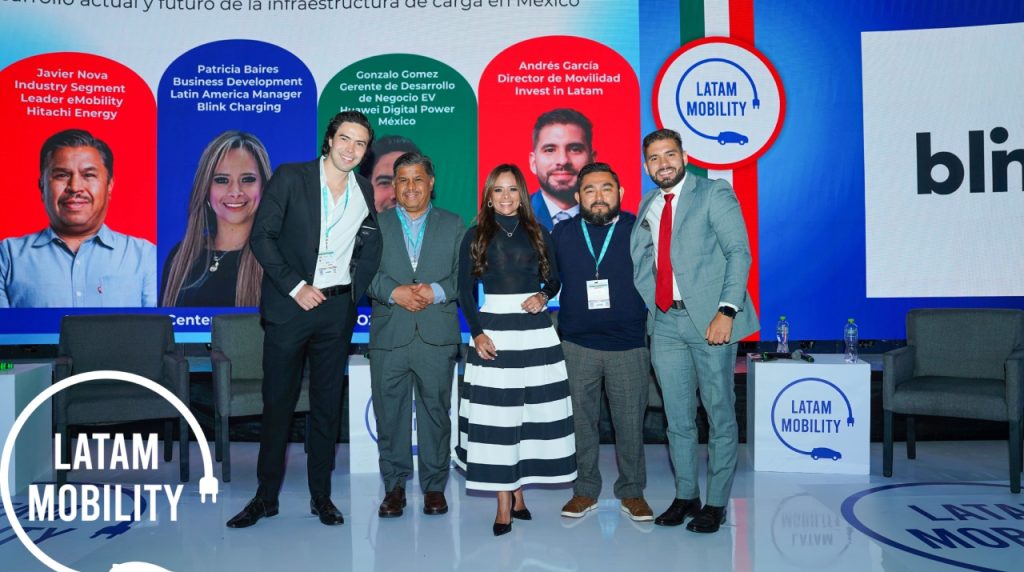Electric vehicle charging infrastructure is a central topic for the development of electromobility in Mexico. Despite the country standing out as a major vehicle producer, the expansion of the charging network faces certain challenges.
In response, Latam Mobility & Net Zero Mexico arrived in the country with a new edition aimed at providing a vision and platform that drives the transition towards greater adoption of electric vehicles.
Thus, Jary Guerra, Director of Sales Latin America NA at Autel, Patricia Baires, Business Development Latin America Manager at Blink Charging, Javier Nova, Industry Segment Leader eMobility at Hitachi Energy, and Gonzalo Gómez Rivera, Business Development Manager EV at Huawei Digital Power México, gathered at the Word Trade Center in Mexico City to discuss the topic, moderated by Andrés García, Director of Mobility at Invest in Latam.

Current state of the charging infrastructure
Currently, Mexico is advancing in the creation of charging stations, but with growth that hasn’t completely kept pace with the demand for electric vehicles.
“Although the supply of electric cars has grown significantly in the country, the charging infrastructure has lagged behind, primarily due to a lack of integrated planning that coordinates the installation of charging points with the entry of new vehicles into the market,” said Javier Nova of Hitachi Energy.

On the other hand, Autel and Blink, two companies developing charging technologies, pointed out that one of the biggest challenges is the lack of clear goals and regulations on how many chargers should be installed and how far apart.
“The growth and adaptation of electric vehicles have outpaced the infrastructure, something not exclusive to Mexico, as I’ve seen it in the region and in the U.S. as well. From experience, we need to focus on this area to boost development, with the power supply being a key factor,” said Jary Guerra of Autel.

Without a precise guide, infrastructure development appears fragmented and uneven, impacting consumer confidence in making the switch to electric vehicles.
“Three years ago, we were still asking what came first: the charging stations or the vehicles. In reality, we haven’t seen significant growth in the infrastructure, and this could lead to a contraction in the growth of electric vehicle adoption,” Baires confirmed.

Challenges in the development of charging infrastructure
One of the problems identified by experts is the lack of investment and robust government policies to speed up the installation of public and private chargers.
“The infrastructure is not just about installing chargers but also about integrating energy storage systems and improving the electrical grid, which is essential to ensure sustainability and alignment with decarbonization goals,” commented Gonzalo Gómez from Huawei.

Another factor is geography. Mexico is a vast country with densely populated urban areas, such as Mexico City, and more dispersed rural regions. The installation of chargers must consider this diversity, as it’s not feasible to simply replicate models from other countries without adapting them to the Mexican reality.
Opportunities and future prospects
Despite the challenges, the future of charging infrastructure in Mexico is promising. Companies like Autel and Blink are already actively working on developing new charging solutions.
Blink, for example, operates in more than 32 countries and plans to expand its network of chargers in Mexico, with advanced technology and proprietary software that efficiently manages the operation of the chargers.
Huawei, on the other hand, is focusing on leveraging its experience in telecommunications and power electronics systems to drive the transition to electromobility.
Additionally, there is an opportunity for Mexico to become a regional leader in the manufacturing of technologies related to electromobility. As Andrés García pointed out, the country has already demonstrated its capability as one of the world’s largest automotive producers, and now it has the chance to replicate this success in the field of electric vehicles.







